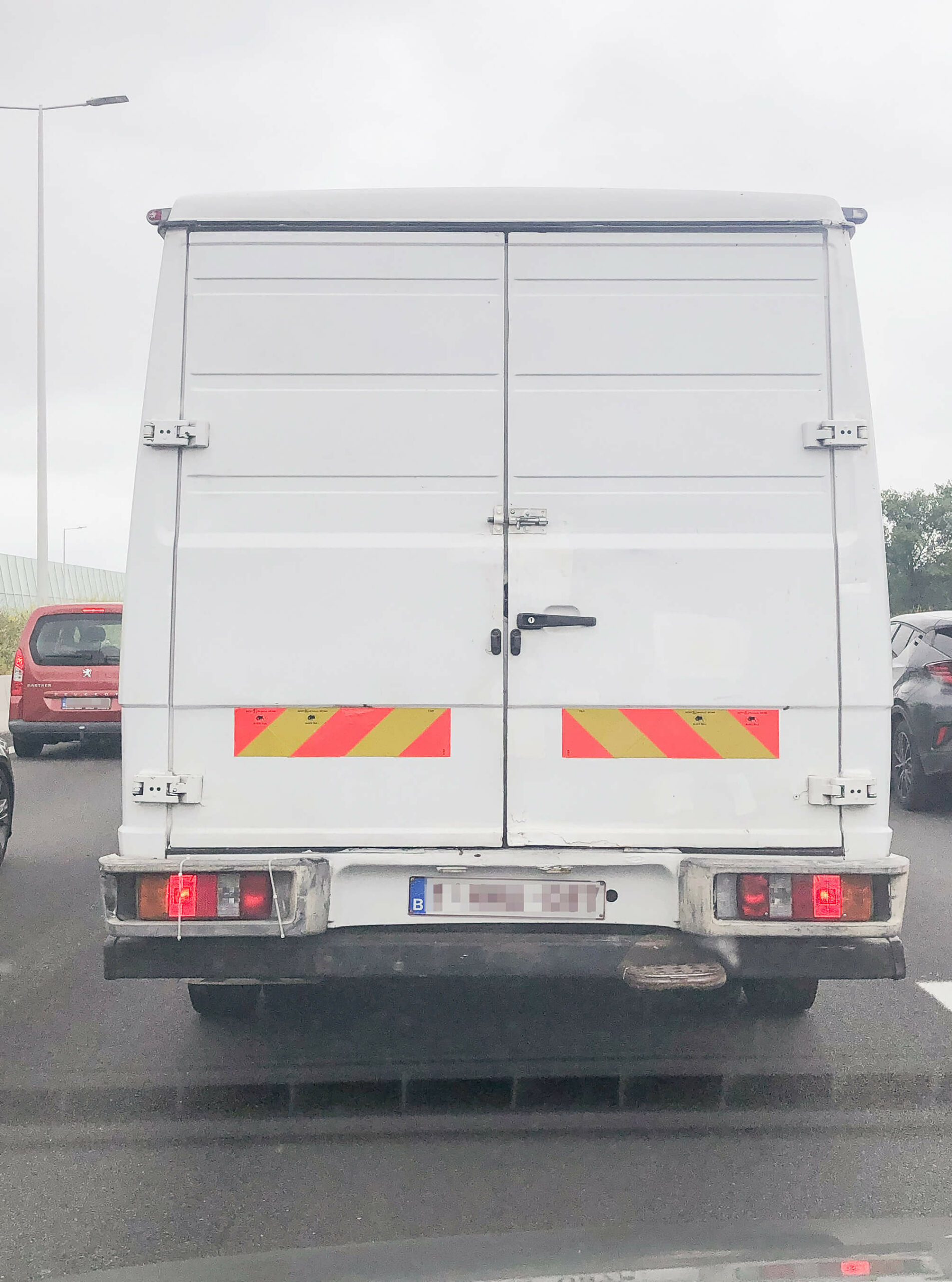What constitutes a ‘document’ and how does it function?
According to the Oxford English Dictionary, the etymological origin is the Latin ‘documentum’, meaning ‘lesson, proof, instance, specimen’. As a verb, it is ‘to prove or support (something) by documentary evidence’, and ‘to provide with documents’. The online version of the OED includes a draft addition, whereby a document (as a noun) is ‘a collection of data in digital form that is considered a single item and typically has a unique filename by which it can be stored, retrieved, or transmitted (as a file, a spreadsheet, or a graphic)’. The current use of the noun ‘document’ is defined as ‘something written, inscribed, etc., which furnishes evidence or information upon any subject, as a manuscript, title-deed, tomb-stone, coin, picture, etc.’ (emphasis added).
Both ‘something’ and that first ‘etc.’ leave ample room for discussion. A document doubts whether it functions as something unique, or as something reproducible. A passport is a document, but a flyer equally so. Moreover, there is a circular reasoning: to document is ‘to provide with documents’. Defining (the functioning of) a document most likely involves ideas of communication, information, evidence, inscriptions, and implies notions of objectivity and neutrality – but the document is neither reducible to one of them, nor is it equal to their sum. It is hard to pinpoint it, as it disperses into and is affected by other fields: it is intrinsically tied to the history of media and to important currents in literature, photography and art; it is linked to epistemic and power structures. However ubiquitous it is, as an often tangible thing in our environment, and as a concept, a document deranges.
the-documents.org continuously gathers documents and provides them with a short textual description, explanation,
or digression, written by multiple authors. In Paper Knowledge, Lisa Gitelman paraphrases ‘documentalist’ Suzanne Briet, stating that ‘an antelope running wild would not be a document, but an antelope taken into a zoo would be one, presumably because it would then be framed – or reframed – as an example, specimen, or instance’. The gathered files are all documents – if they weren’t before publication, they now are. That is what the-documents.org, irreversibly, does. It is a zoo turning an antelope into an ‘antelope’.
As you made your way through the collection,
the-documents.org tracked the entries you viewed.
It documented your path through the website.
As such, the time spent on the-documents.org turned
into this – a new document.
This document was compiled by ____ on 03.02.2022 14:07, printed on ____ and contains 18 documents on _ pages.
(https://the-documents.org/log/03-02-2022-3736/)
the-documents.org is a project created and edited by De Cleene De Cleene; design & development by atelier Haegeman Temmerman.
the-documents.org has been online since 23.05.2021.
- De Cleene De Cleene is Michiel De Cleene and Arnout De Cleene. Together they form a research group that focusses on novel ways of approaching the everyday, by artistic means and from a cultural and critical perspective.
www.decleenedecleene.be / info@decleenedecleene.be - This project was made possible with the support of the Flemish Government and KASK & Conservatorium, the school of arts of HOGENT and Howest. It is part of the research project Documenting Objects, financed by the HOGENT Arts Research Fund.
- Briet, S. Qu’est-ce que la documentation? Paris: Edit, 1951.
- Gitelman, L. Paper Knowledge. Toward a Media History of Documents.
Durham/ London: Duke University Press, 2014. - Oxford English Dictionary Online. Accessed on 13.05.2021.

At a dental practice, the white Alligat®-powder is mixed with the right amount of water to get a mouldable dough that is pressed upon a patient’s teeth. After thirty seconds, the Alligat®-dough stiffens and takes on a rubber-like quality. At that point, still white, it must be removed from the patient’s mouth. Over the next few hours, the mould turns increasingly pink as the substance becomes less humid. Now, it can be used as a mould to create a positive master cast of the patient’s teeth.
Outside the dental practice, the powder’s possibilities remain to be fully explored.

First published as part of De Cleene De Cleene. ‘Amidst the Fire, I Was Not Burnt’, Trigger (Special issue: Uncertainty), 2. FOMU/Fw:Books, 25-30
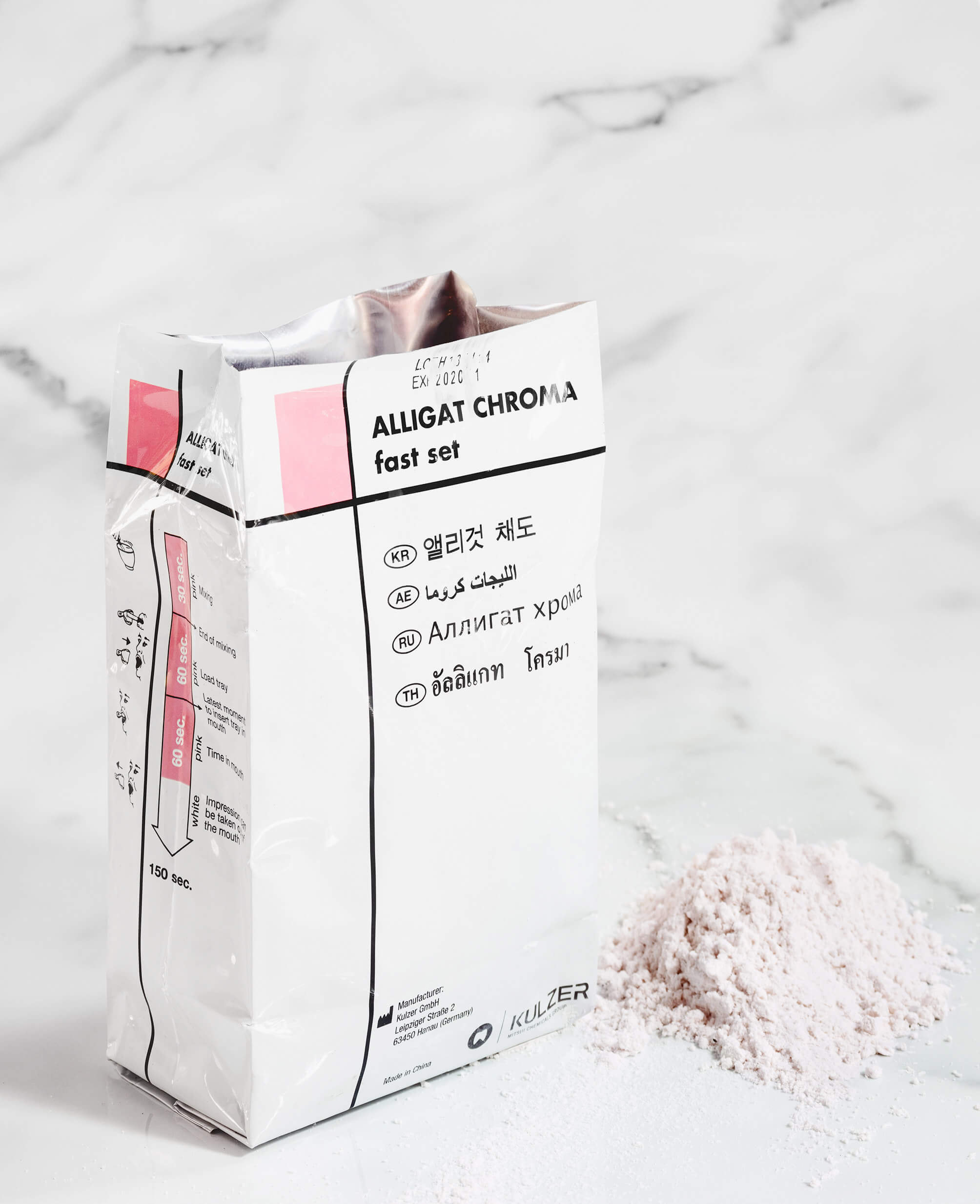
Because an acquaintance of the family was a missionary, the postage stamp collection had a large quantity of stamps from the Philippines. You had to boil water, hold the empty envelope above it, wait until the glue and the missionary’s saliva loosened and evaporated, and then gently peel off the stamp. Then, it was put on a piece of pink blotting paper. Once dry, the stamp was slid into a tailor-made booklet.
Between a Horta building’s facade and King Baudouin’s portrait, there are exotic fish, religious scenes, butterflies, and advertisements for NGOs.
Mango is the Philippines’ national fruit. Pope John Paul II visited it in 1995. There was a guerrilla unit in Northwest Pampanga during WWII.
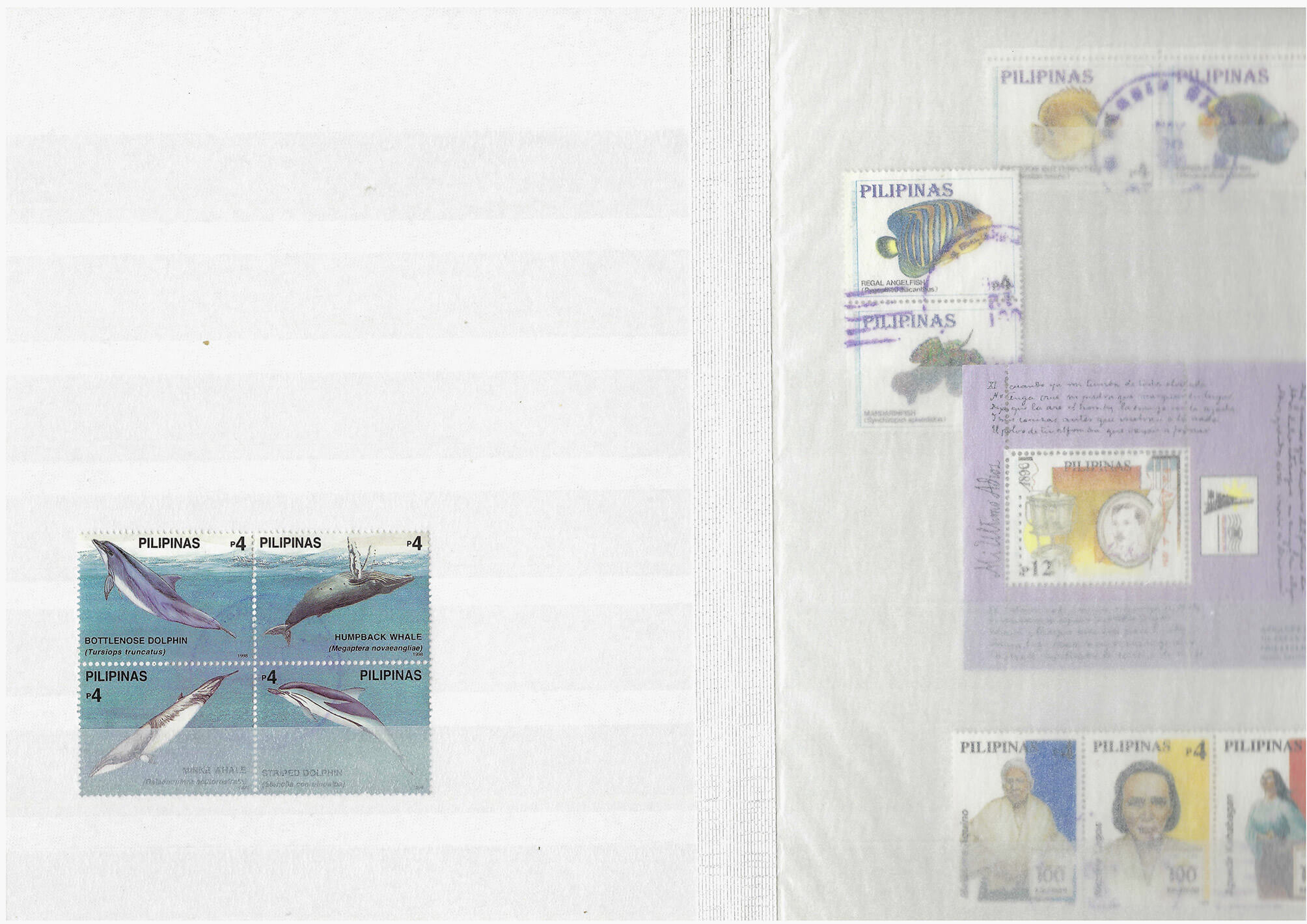
The archive of O. Clemminck, architect, was preserved in a box of croutons – by him, the historian who gave it to my father, or someone else (it contains a letter written by Clemminck’s widow asking a client to pay the bill her husband had sent). The croutons had a flavor of fine herbs and, a stamp on the box with the plans in it says, should have been consumed before April 1987.
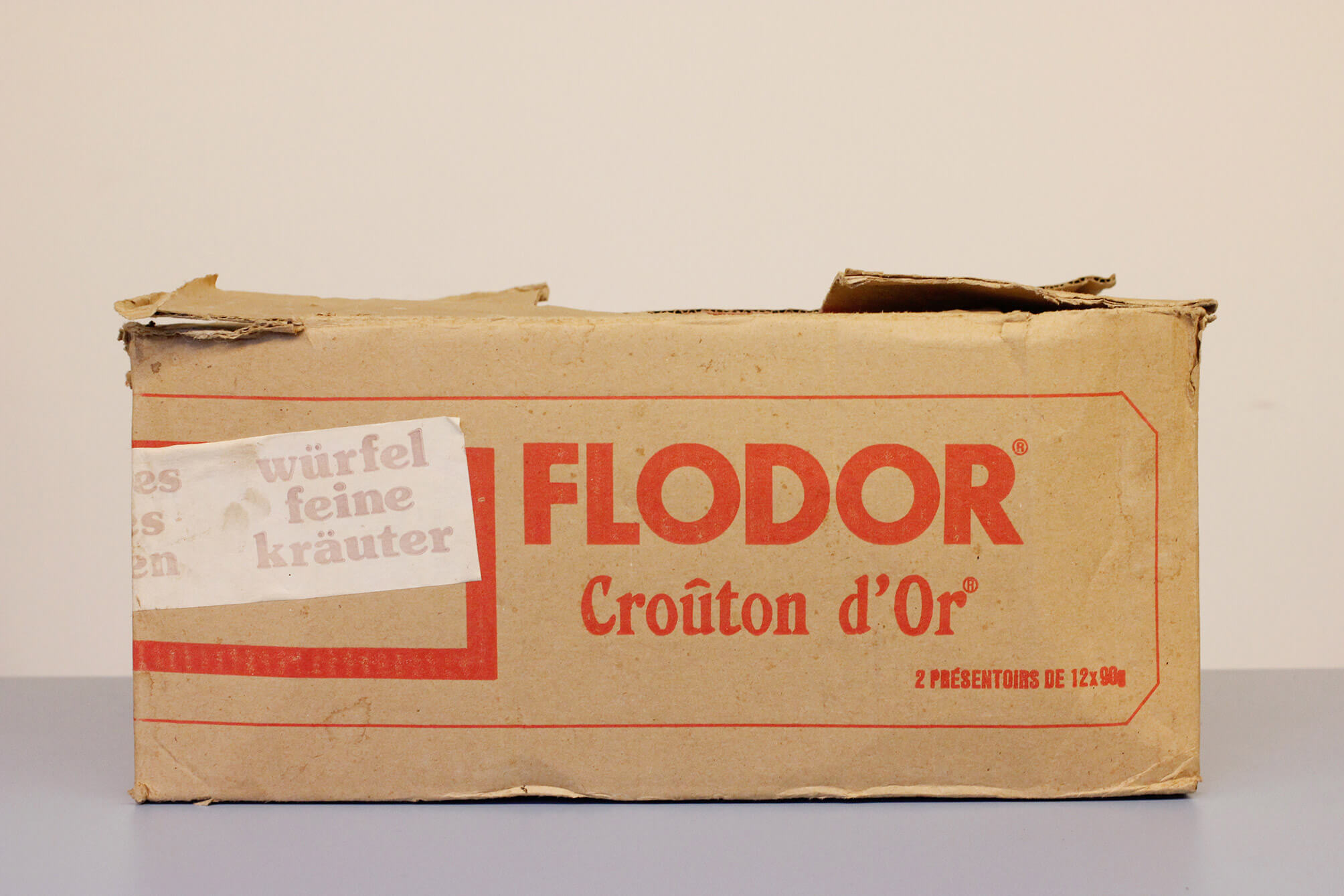
A 250 meter walk away from the seaside. A sign states in Dutch and French:
‘!!! NO PARKING !!!
Wrongly parked cars will be chained and only released upon payment of a € 40 parking fee’
The 40 EUR parking fee the sign threatens to charge is communicated by a relatively new sticker stuck on an older sign. Underneath the three black characters (€, 4 and 0) on a white background, there’s a relief: 7 characters declaring a parking fee of 1500 BEF.
1500 BEF equals 37,18 EUR1. In changing currency, the fee increased by 7,58%.
The Belgian franc was the currency of the Kingdom of Belgium from 1832 until 2002 when the Euro was introduced. 1 EUR is worth 40,3399 BEF.
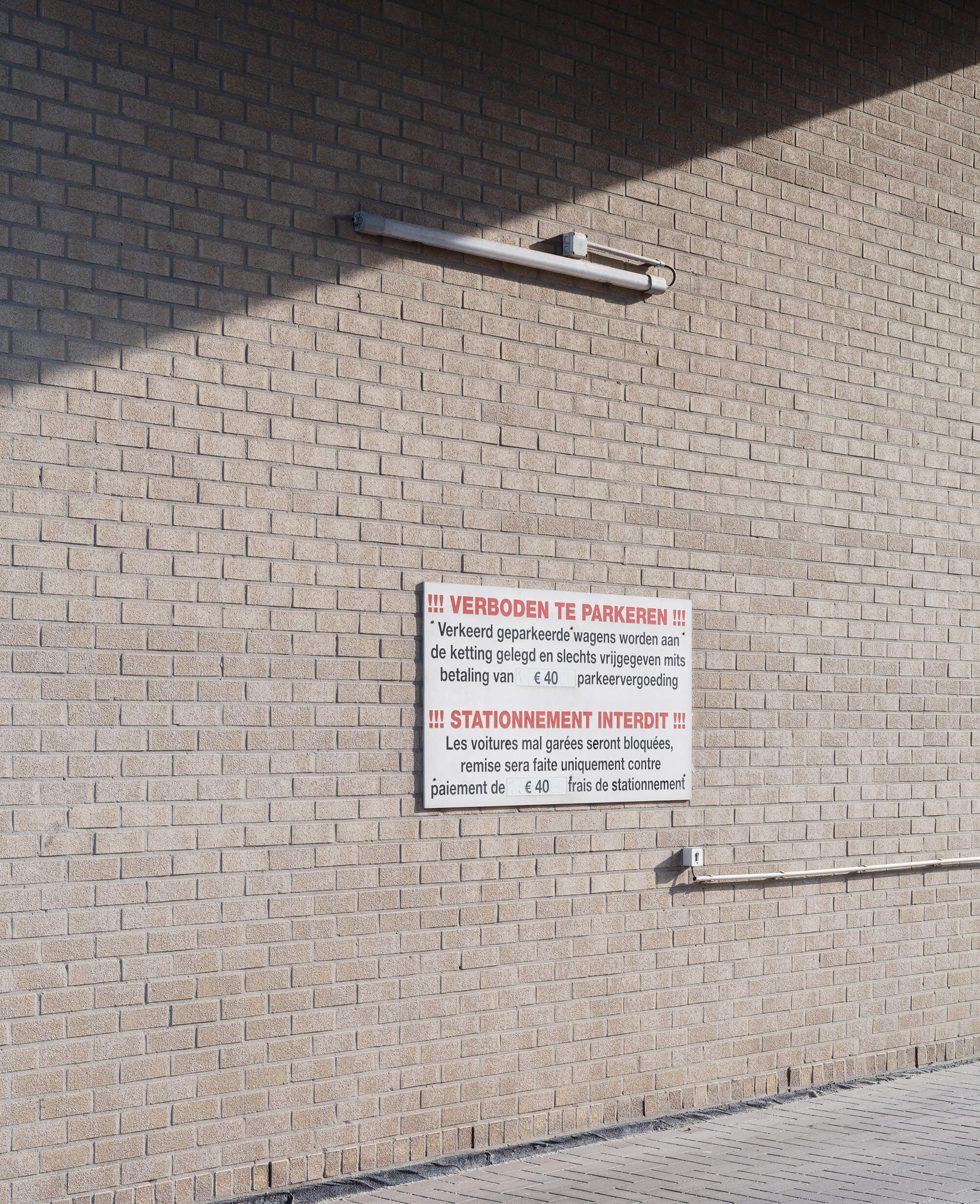
K. says that the stall where he usually buys fruit has already been packed up. But he is not worried about the quality of the fruit the other vendor sells. He gestures encouragingly.
Five signs of type-1, eleven of type-2 and two of type-3 are visible. Four of type-2 (two visible, two deduced) and two of type-3 retain two vehicles.



Márk Redele pursues projects that fundamentally relate to architecture and its practice but rarely look like architecture. www.markredele.com

What they took for ice that slid down the dam’s slope, appears to be the reason for draining the reservoir: a fissure in the watertight layer. The dam became unreliable.
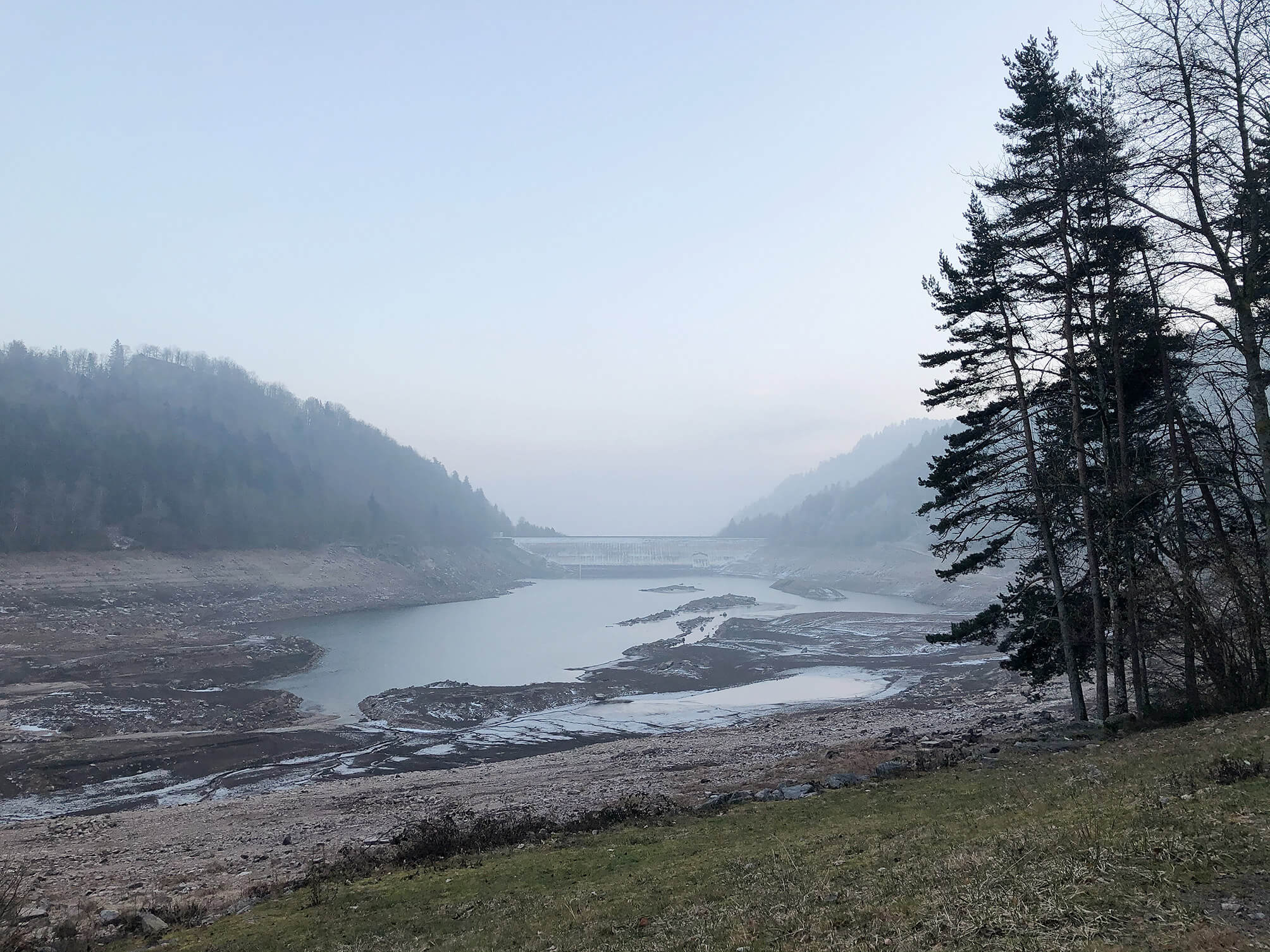
Where once there was twelve million cubic metres of water, excavators and trucks are moving dirt and rocks that have been hidden from sight for 56 years; piling them up into a temporary dam: a batardeau.

Seven years after the devastating flood, in 1954, the building of the dam is decided upon. Between 1959 and 1963 the infrastructure is built, and the reservoir gets filled with water in 1964 to act as a buffer for sudden floods and to guarantee a flowing Thur through the highly industrialized area downstream.
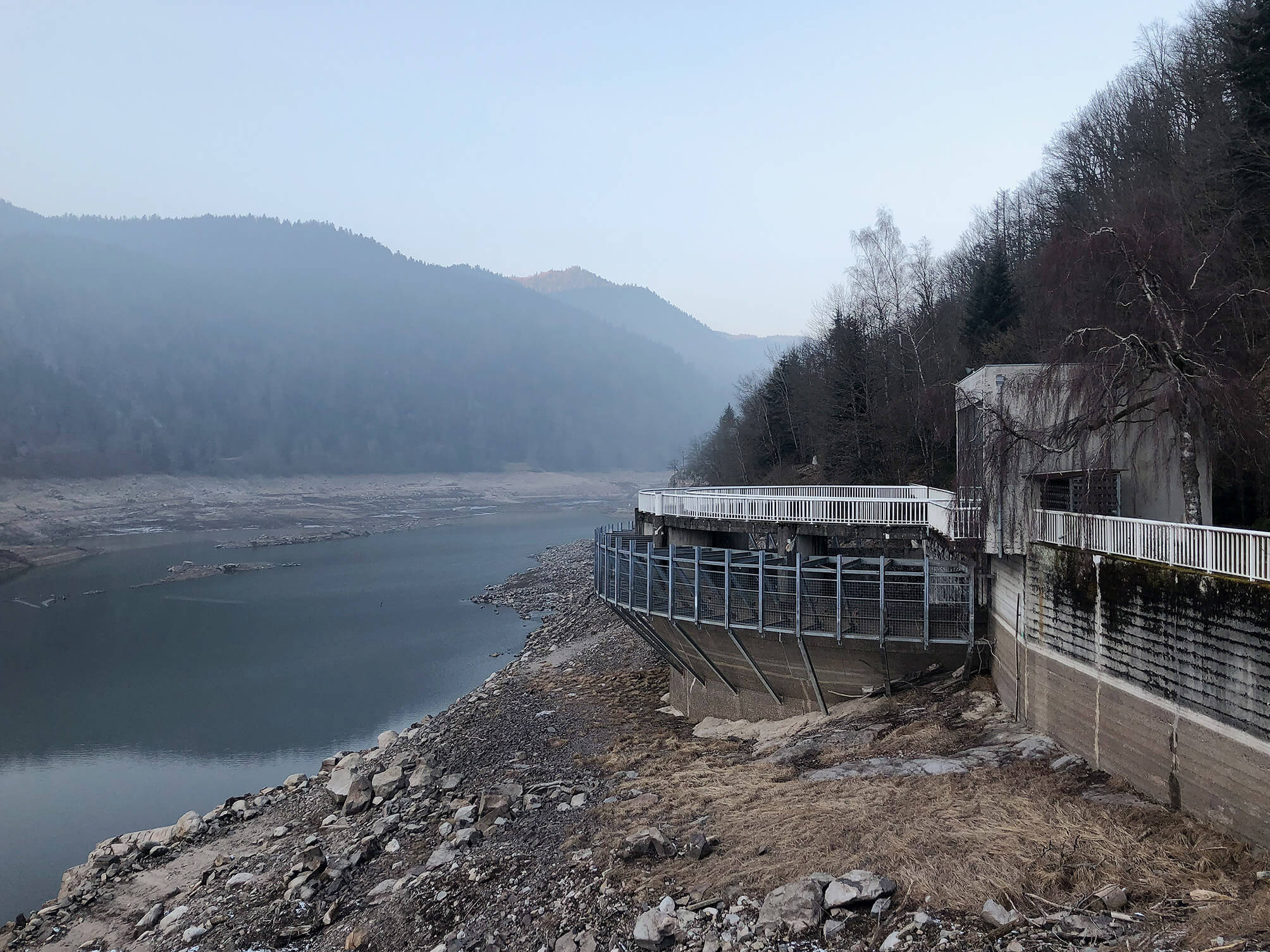
December, 1947. Rapid snowmelt coincides with torrential precipitation. At the bottom of the Thur valley, in Wildenstein, the water gathers.
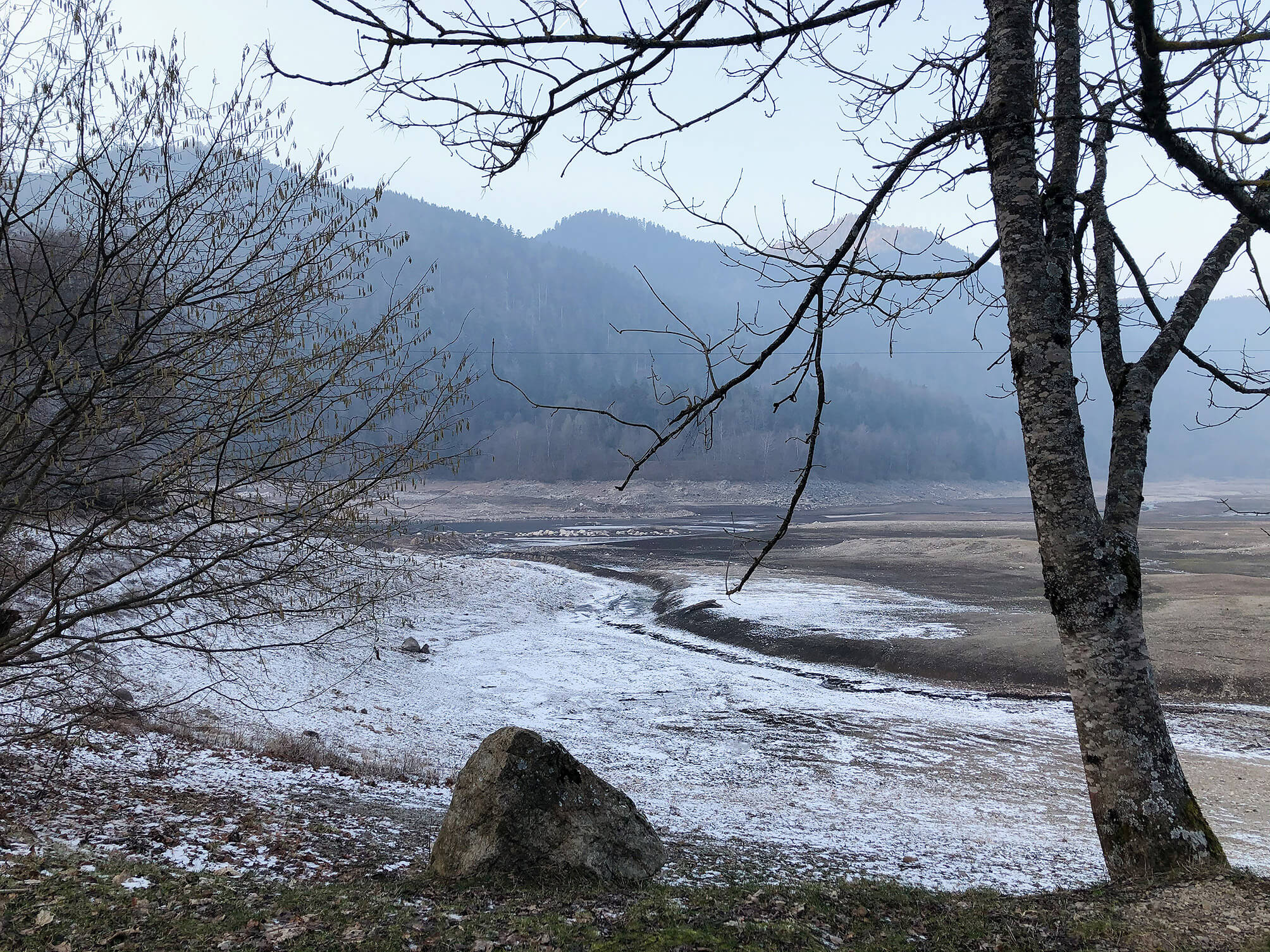
The building is almost finished. One apartment is still up for sale, on the top floor. The contractor is finishing up. There’s a long list of comments and deficiencies that need to be addressed before the building can be handed over definitively to the owner. The elevator’s walls are protected by styrofoam to prevent squares, levels, measures, drills, air compressors, chairs, bird cages, etc. from making scratches on the brand new wooden panelling.
In 1932 Brassaï began taking photographs of graffiti scratched into walls of Parisian buildings. On his long walks he was often accompanied by the author Raymond Queneau, who lived in the same building but on a different floor. Brassaï published a small collection of the photographs in Minotaure, illustrating an article titled ‘Du mur des cavernes au mur d’usine’ [‘From cave wall to factory wall’].
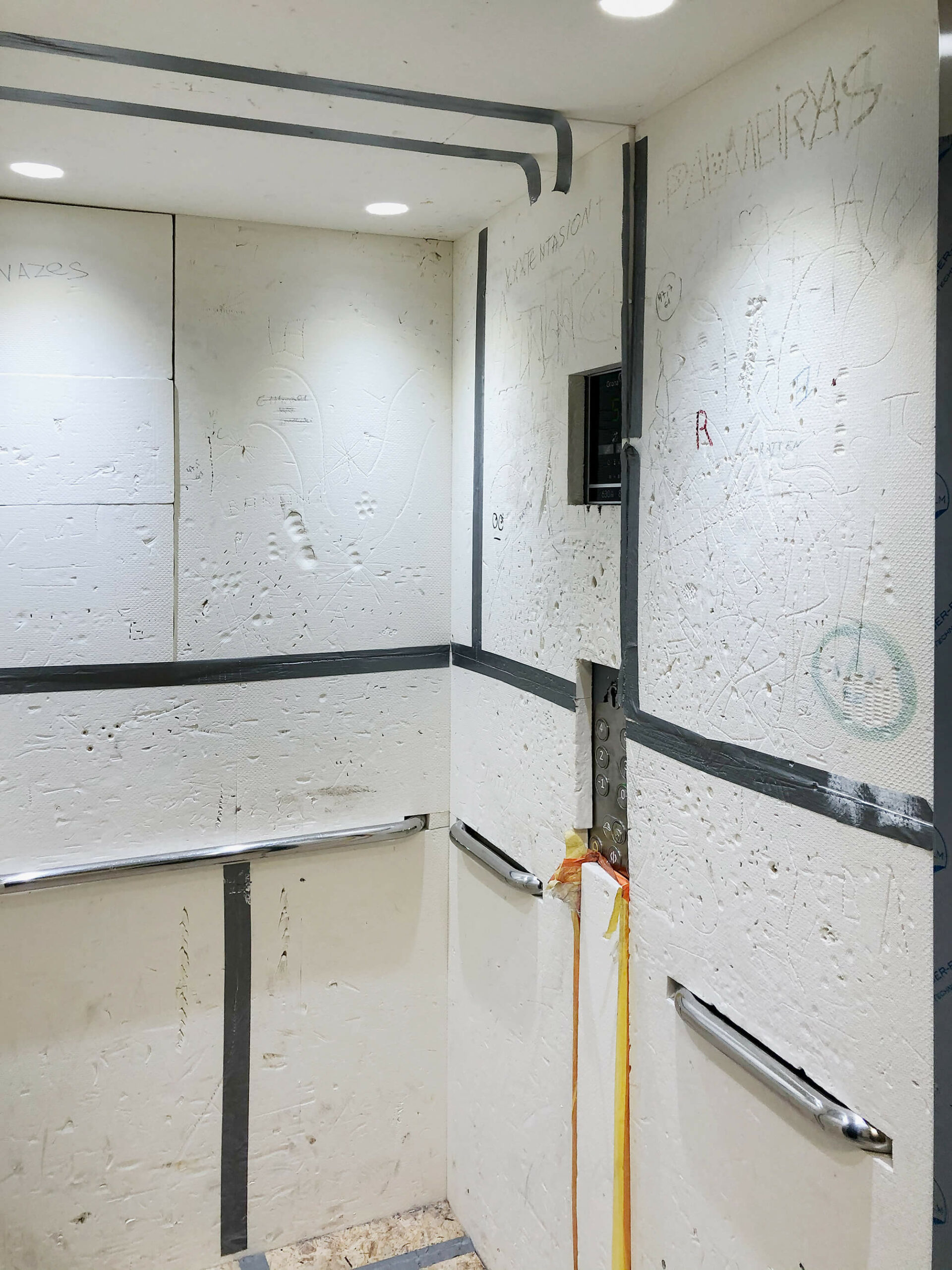
I recognized it in a flash, the late Jurassic-early Cretaceous herbivore looming dangerously over the road I was cycling on. I thought of Some Windy Trees.1
A utility pole (425638, 07/99, 07/2002, COBRA), electrical wires, a hawthorn (Crataegus) and an old man’s beard (Clematis vitalba). A symbiosis.
Delbrouck, V. Some Windy Trees. Loupoigne: Wilderness, 2013.
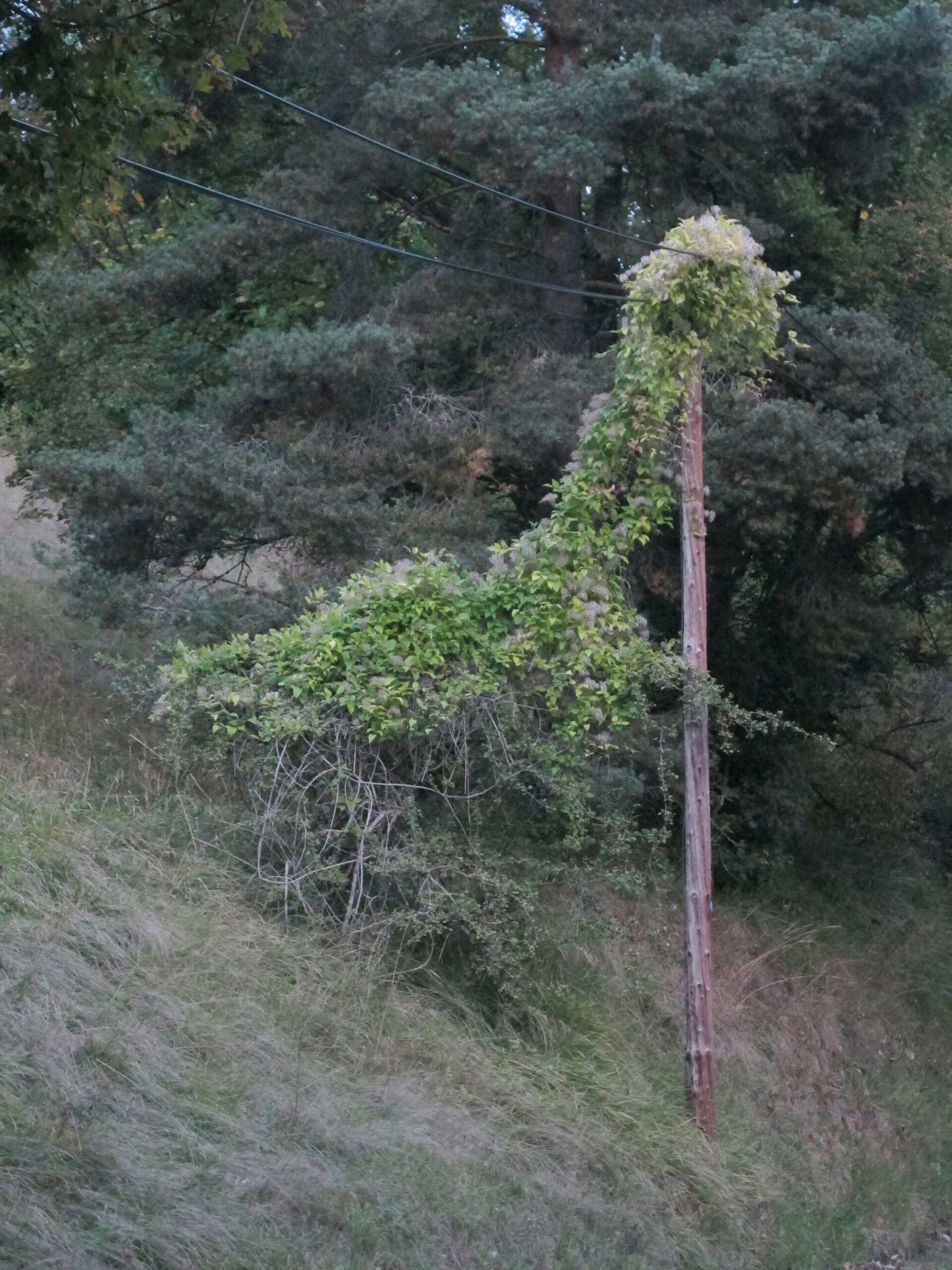
In 2020, the print versions of the Flemish telephone books ‘Gouden Gids’ and ‘Witte Gids’ (The Golden Guide and The White Guide), were published for the last time. From that year onwards, the directory could only be accessed and consulted online. The effect of the production of print telephone directories on the environment is considered to be enormous. As yearly updated, ubiquitous books, they were publications that soon turned superfluous. They led to piles of waste.
From the beginning of the 21st century on, both the print version and the online version had been available. This was a period of medium transition. During the last two decades, the print directory increasingly referred to the websites of the companies listed. To search for e.g. someone to inspect the heating installation, it was possible to find such a company’s website via the print directory, and consult the inspector’s services and price online, bypassing search engines such as Google and its complex algorithms. The telephone directory had a thematic and alphabetical order, combined with the possibility to buy additional advertising space.
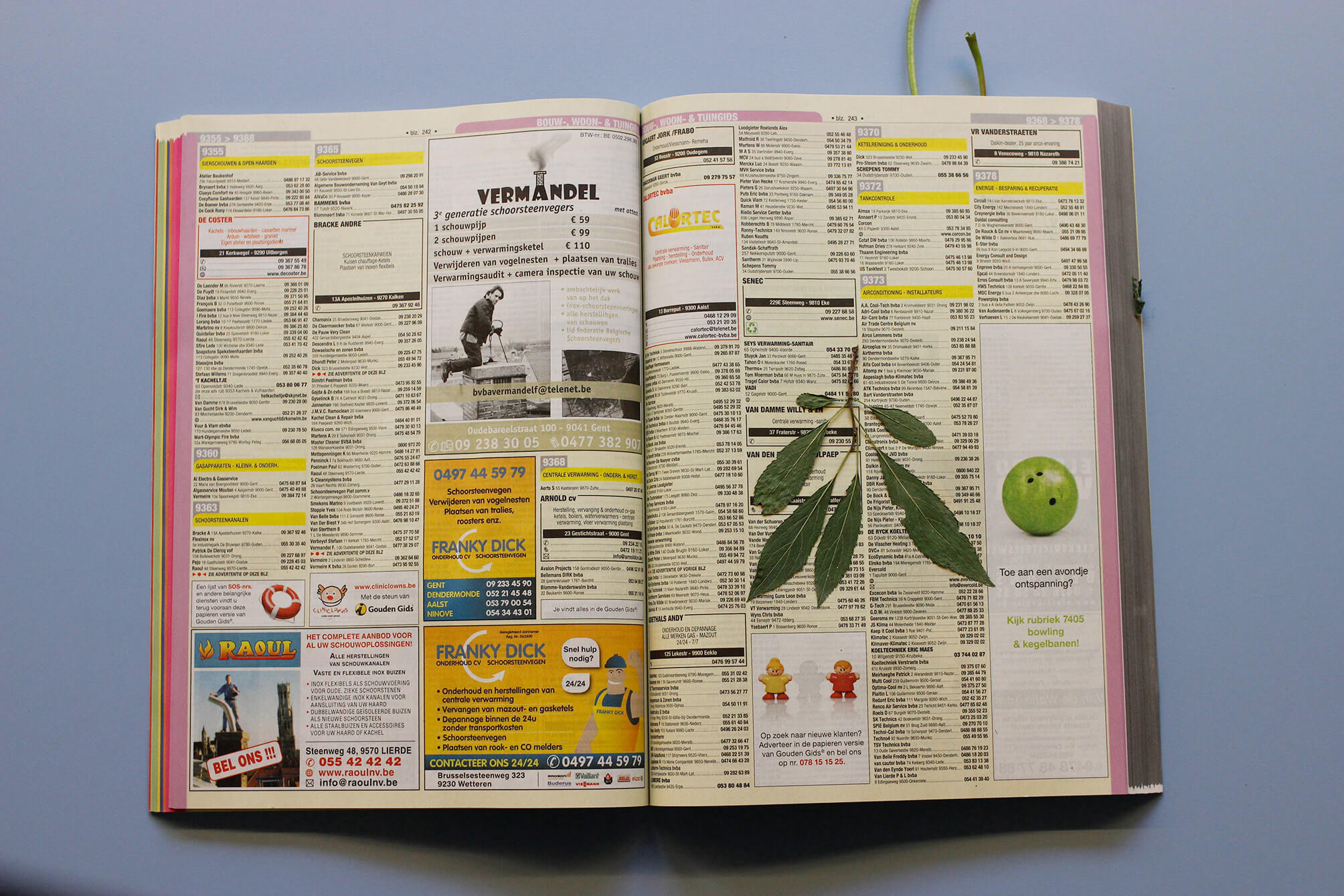
‘ORIGINAL. Rire de tout ce qui est original, le haïr, le bafouer, et l’exterminer si l’on peut.’
[‘ORIGINAL. Laugh with everything that’s original, hate it, scold it, exterminate it if you can.’]
Flaubert. Bouvard et Pécuchet (présenté par Raymond Queneau). Paris: Livre de poche, 1959 (with p. 232-233: dried leaf of a ginkgo tree, and p. 324-325: dried leaf of a birch tree), p. 429 [2,00 EUR, Librairie Vic-sur-Cère, August 2021].
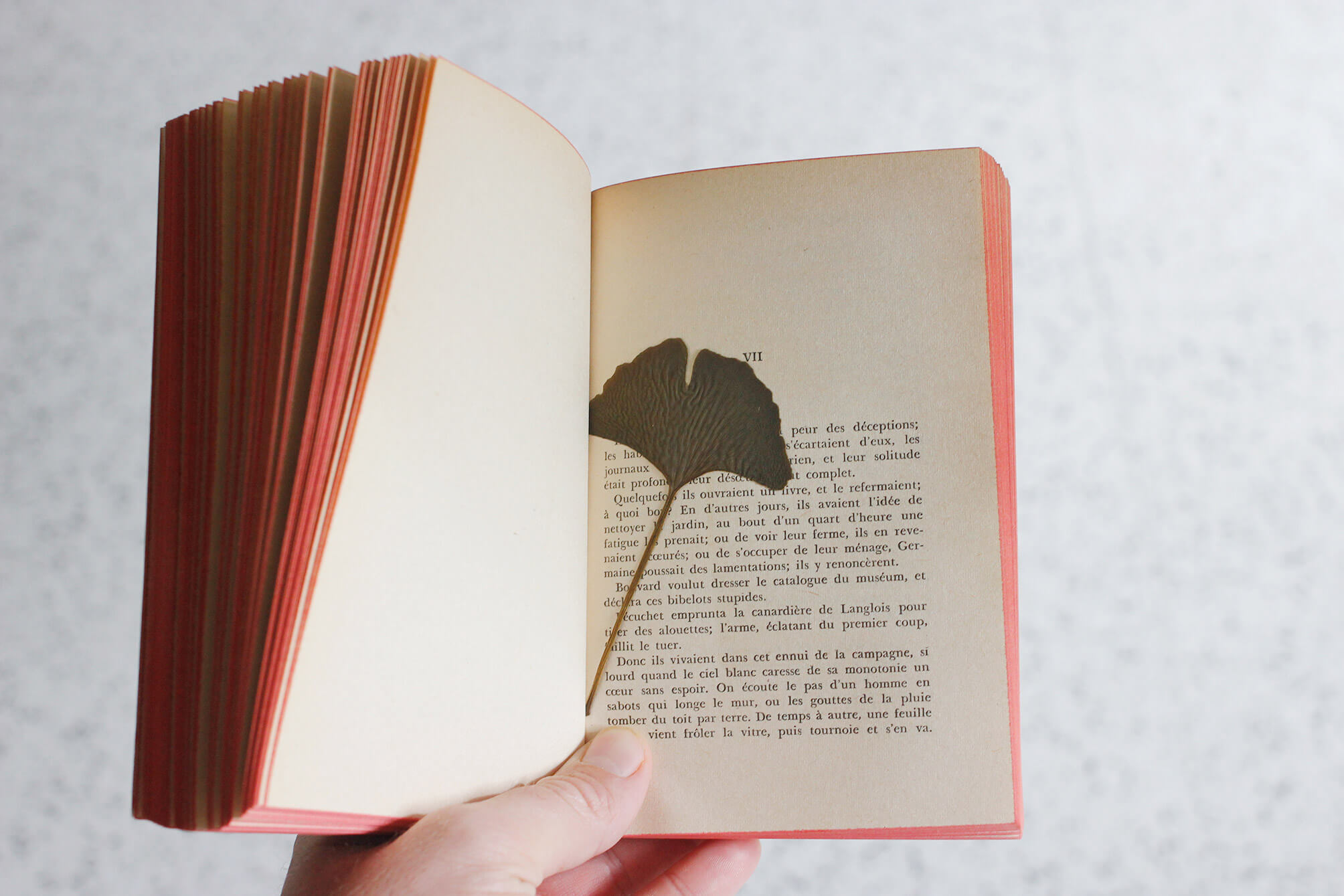
A mostly empty book designed to collect cigar bands. The bands are glued to the paper at their left side, so the information on the backside, explaining the image and referring to the series it belongs to and the number of different labels the series contains, can be looked up. The book has complete and incomplete series on Christopher Columbus (complete), tanks (incomplete), the origins of civilization (complete), Ancient cultures (incomplete), fashion (complete), South-American sculptures (complete), Ancient columns (incomplete), Nobel Prize Winners (incomplete), an unclarified series of seven men, most of whom are ‘prof.’ or ‘dr.’(complete / incomplete), design plates (incomplete), famous Belgians (complete / incomplete), statesmen (incomplete) and football players (incomplete). The first page in the book is used to present two series. The left column presents the Egyptian dynasty (incomplete). The middle and right column present a series of bands by the brand Jubilé on the history of energy in telling scenes and pieces of machinery.
Series: Energy
Middle column, top to bottom:
- The writing telegraph. Hughes
- Experiment with a sulphur globe. William Gilbert
- Primitive telephone. Philipp Reis
- Wireless telegraph.1 Guglielo [sic] Marconi
- The arc of Volta. Sir Humphry Davy
- Fire in the wagon. Thomas Alva Edison
- Experiments with lightning. Benjamin Franklin
- Cathode for creating X-Rays. Wilhelm Röntgen
- Rotating magnetic field. Galileo Ferraris
Right column, top to bottom:
- Electric discharge. William Watt
- Magnetic telephone. Antonio Meucci
- Muscles reacting to electricity. Luigi Galvani
- Voltaic pile. Alessandro Volta
- Oscillating circuit. Guglielo [sic] Marconi
- Development of the telephone. Graham Bell
- Telephone, beginning of the 20th century
- Next to his wireless telegraph. Guglielo [sic] Marconi
- Invention of the incandescent light bulb. Thomas Alva Edison
- Morse’s telegraph. Samuel Morse
The series is incomplete.2
The scene shows a man standing at a desk, sticking out his hand to an officer in a window that reads, in mirror writing: Customs.
On eBay a complete series is advertised (15 EUR), with a lo-res picture of the whole collection, including the five bands missing in my grandfather’s collection. The information on the back, however, is not given. It leads to a highly speculative history of energy.
A man in a gown watching a T-shaped object.
A child in a cellar, sitting on a stool at a table with gray objects.
A soldier kneeling beside a child, in front of a train, and in front of a boat.
A low table with a giant cartwheel of sorts and a box.
A vertical object with what seems to be a bell on top.
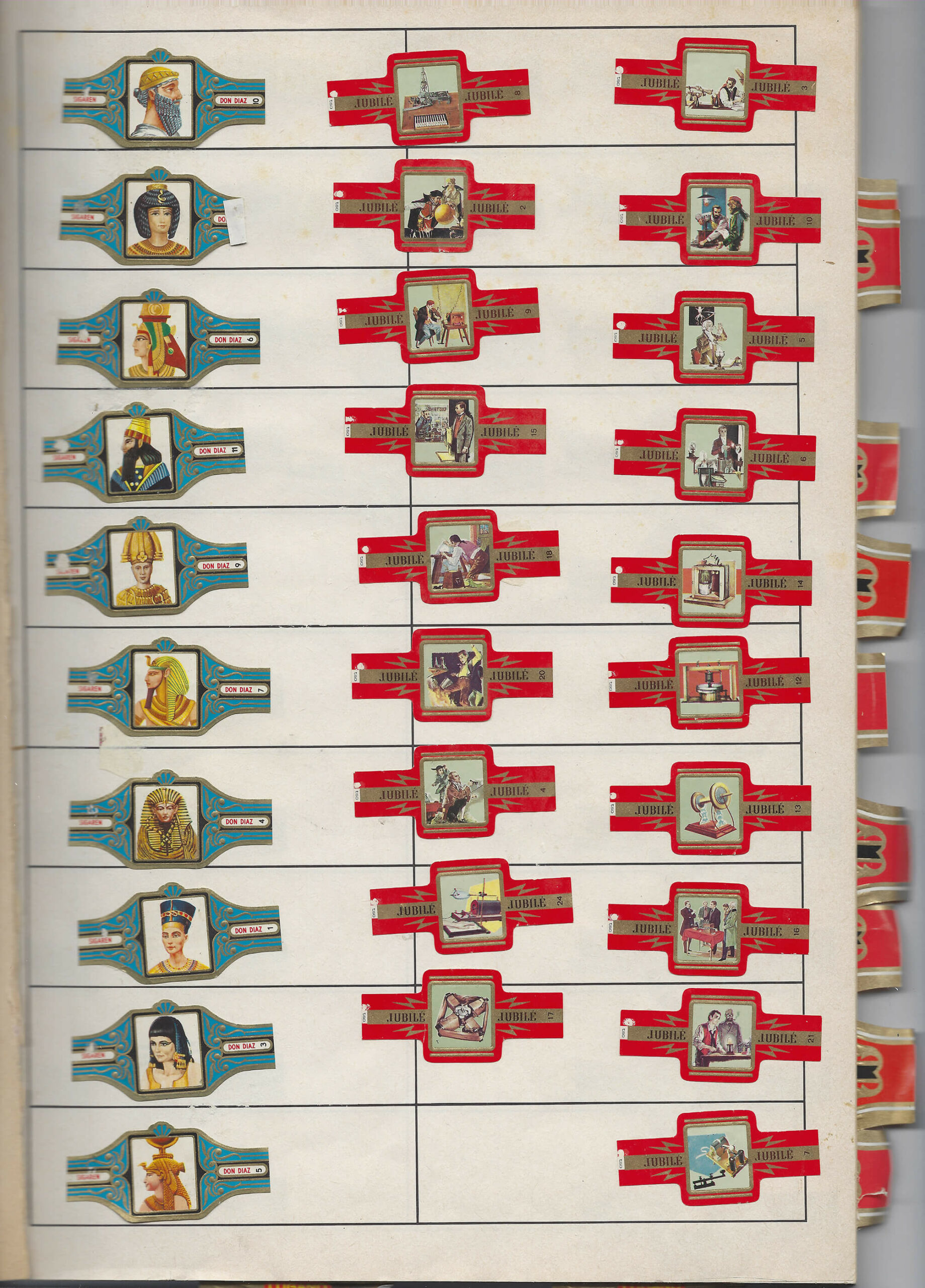
The oldest coin in the collection has darkened over time, but upon inspection, the text ‘AD USUM BELGII AUSTR’ (left) and the contours of a (female) head (right) can be discerned. A quick search learns it stems from the middle of the 18th century. The coin was made and used in the Austrian Netherlands, reigned by Maria Theresa, who is the one depicted. My mother recollects finding it in the backyard when she was a kid.
About 40 years later, the euro was introduced. The ringbinder with my mother’s coin collection was taken from the shelf. A dilemma came to the fore: we wondered if we should keep one of each existing Belgian coin and banknote and put them in the binder, alongside Maria Theresa, or if we should exchange them for the new European currency. The decision to keep a coin of five Belgian francs was not difficult to make, but as the amount raised, the answer was increasingly hard to give. This was an assessment of the old currency’s emotional and projected historical value, compared to its current financial worth. It was a decision based on investment principles.
To accentuate the value of the Maria Theresa kronenthaler of 1 liard, I put the coin on a pile of red post-it-notes when photographing it. Coins like these are sold on eBay for prices ranging from 0,70 euros to 16 euros.
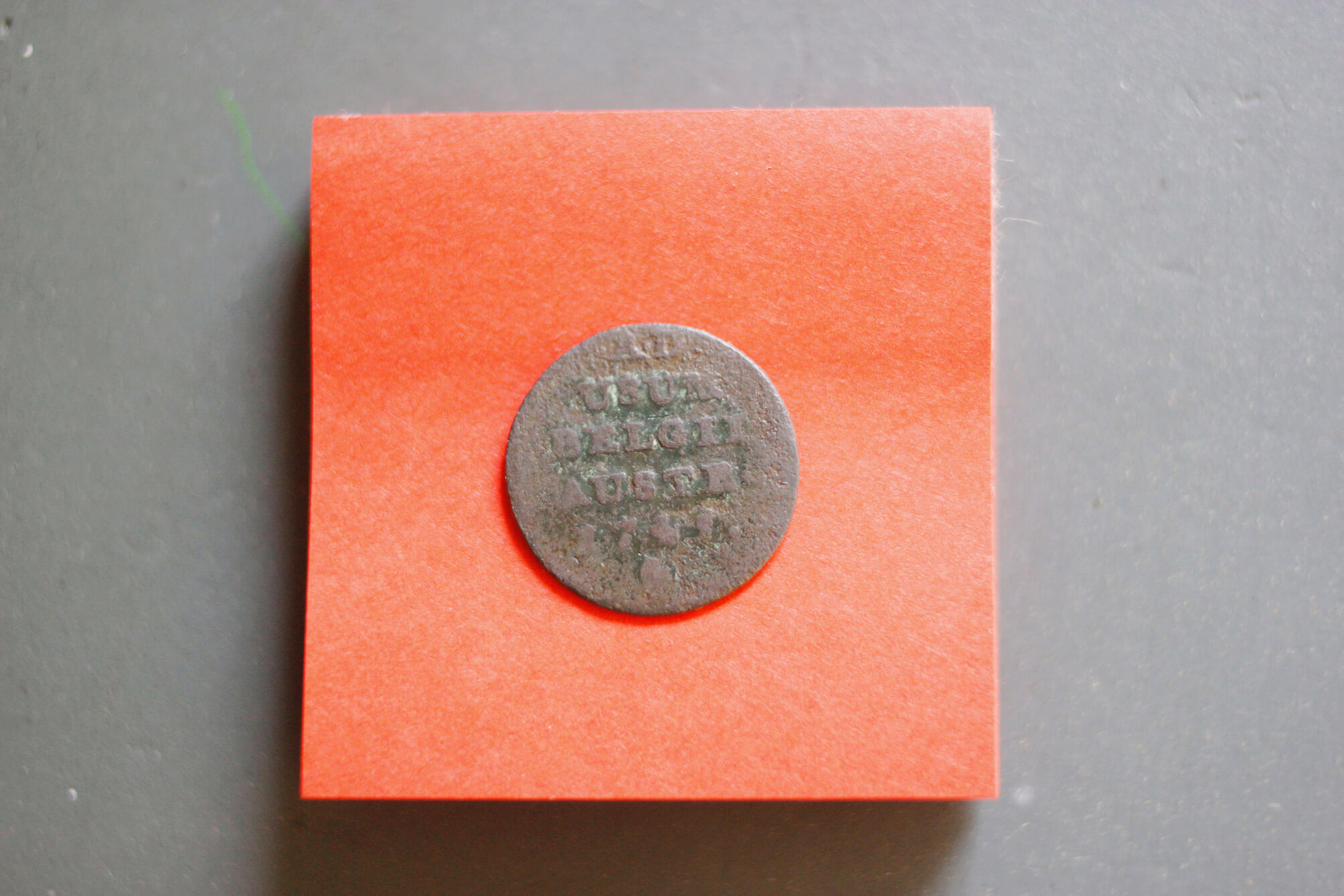

This is the spread one sees upon opening the bird field guide that once stood, as the stamp indicates, in the library of a psychiatric institution.1 It shows birds’ silhouettes, as they can be seen beside the road.
The drawing has a kind of Hitchcock feel to it.2 The birds seem to be spying on each other, as they also seem to be spying on the unsuspecting passer-by.
The composition of the scene is marvelous. The electric wires, the tree, the wire fence, the double framed list with the birds’ names, handsomely positioned in a birdless patch, at once superimposed on the telephone wires, and pushed to the background by the skylark.
Imagine seeing this scene. What are the odds: to see the silhouettes of Europe’s twenty most common species of birds in one glance, from your car’s window, as you are driving home at dusk.
Before closing the book, the last spread seems to show the birds fleeing, maybe attacking.3
The stamp indicates that, at the psychiatric institution, the book was part of the sublibrary for the Catholic Brothers of Charity. The crossed-out part indicates that there was also a separate physicians’ library, to which the book might have originally belonged.
On the web, discussions on whether Alfred Hitchcock’s The Birds (1963) was shot in colour or in black and white, abound.
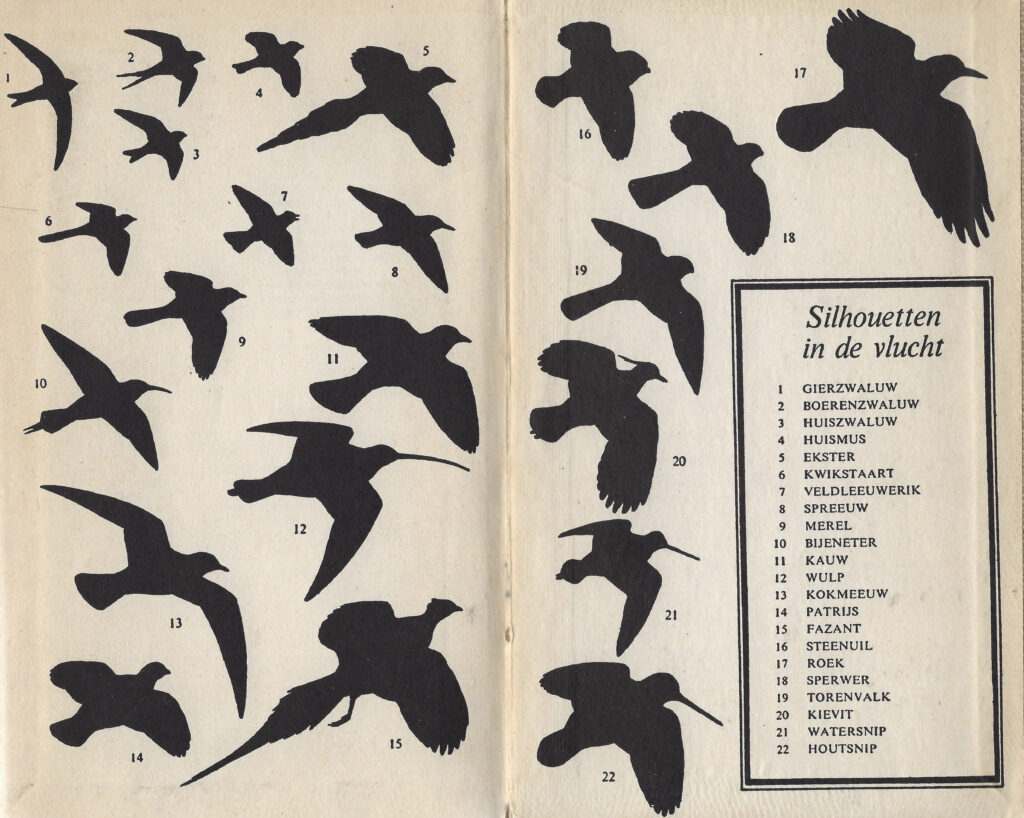
Peterson, R.T., Mountfort, G. & P.A.D. Hollom. Vogelgids voor alle in ons land en overig Europa voorkomende vogelsoorten (J. Kist, transl.). 3d ed. Amsterdam/Brussels: Elsevier, 1955.
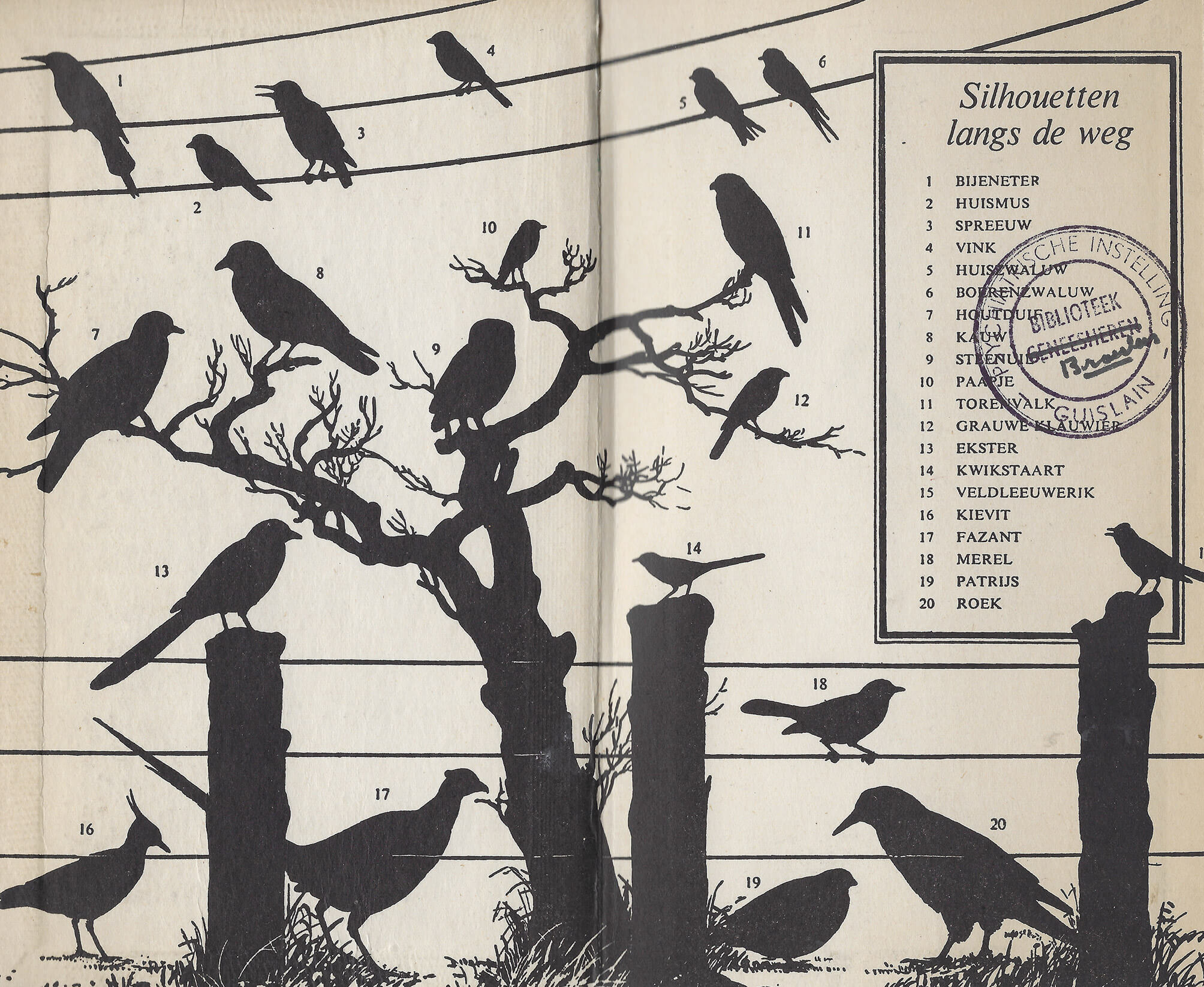
On the second to last day of a research visit at CERN, there was some spare time in the schedule. I took a long walk towards building 282 in search of some excavation samples: cylindrical pieces of rock that were preserved when the tunnel was dug, glued to a block of wood and frequently exhibited in museums over the last three decades as material evidence of the earthwork and as a witness to the depth. The route led me along the back of building 363 where the wind caused young trees – now gone – to scuff the facade over time.
First published in: De Cleene, M. Reference Guide. Amsterdam: Roma Publications, 2019, as W.569.EXC CERN, Towards Building 282, in search of excavation samples
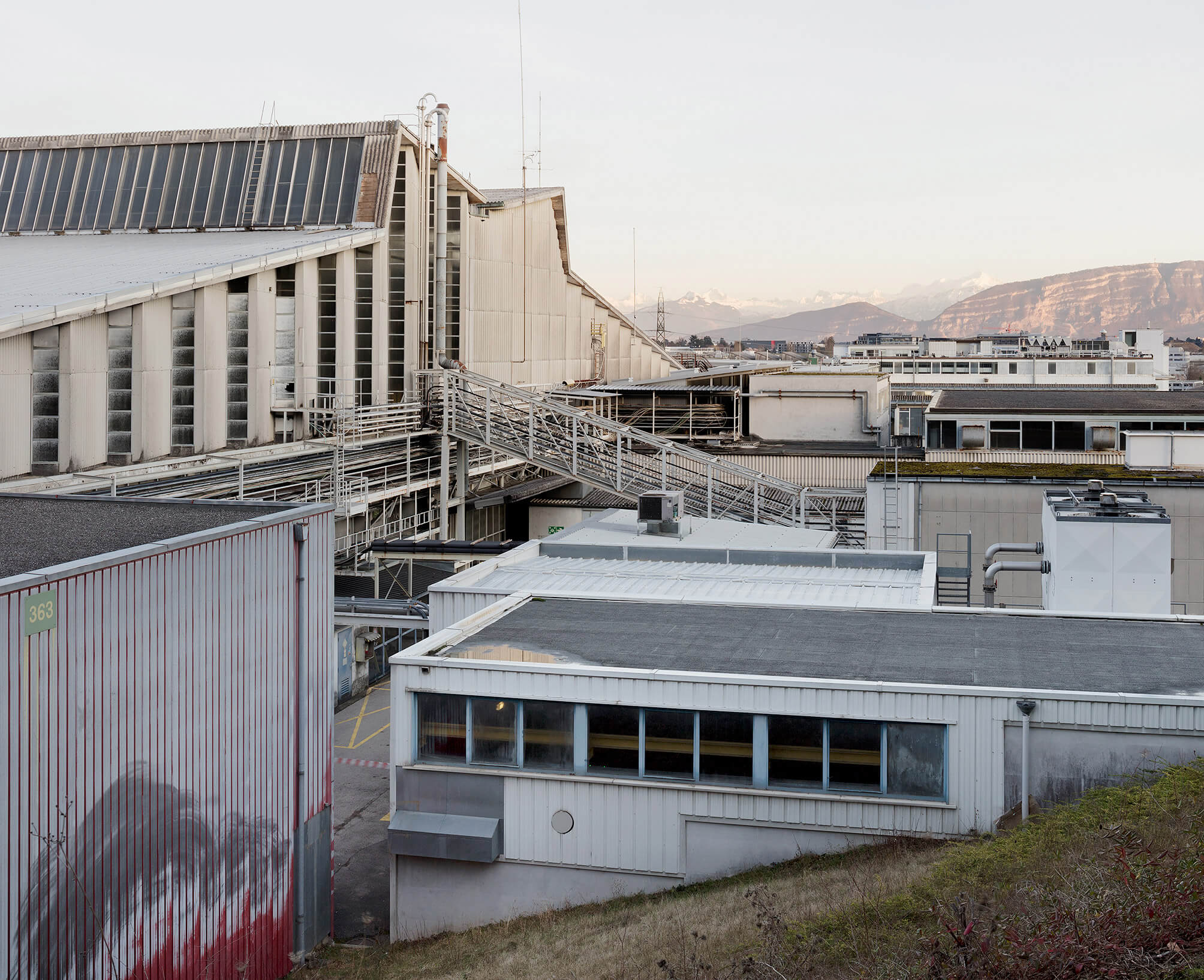
A white Mercedes van inserts in front of me in a traffic jam near Antwerp. The back of the van has been altered in several ways: a latch was added to the door,1 a footstep was bolted to the bumper, a couple of tie-wraps are holding up the lights on the left side.2 Traffic is moving slow. There is no Mercedes logo.3 Some parts have been retouched with white paint that differs slightly from the rest of the bodywork,4 not unlike a tipp-ex’ed document.
Maybe the original locking mechanism no longer functions, or, perhaps, the owner wants to add a padlock to the doors at night.
Maybe a corroded screw caused the lights to come loose, or a slight collision.
Someone might have stolen it. Mercedes stars are often stolen, although mostly from the hood.
Maybe to counter corrosion, to conceal a mark someone made on the van or to cover up a fixed dent.
Legislation concerning the publication of someone else’s licence plate on the internet and the demand to blur it, is somewhat ambiguous.
